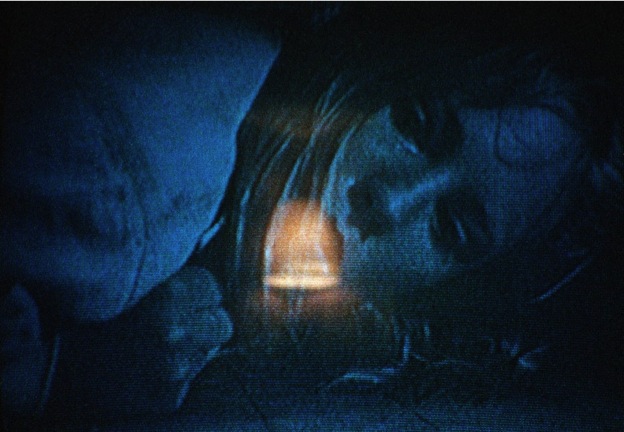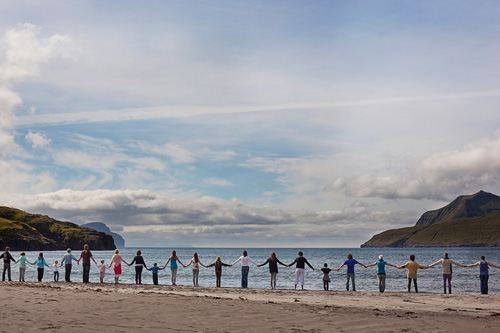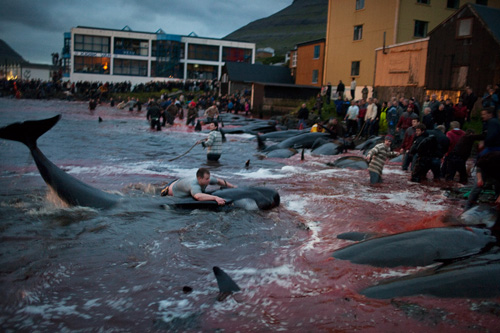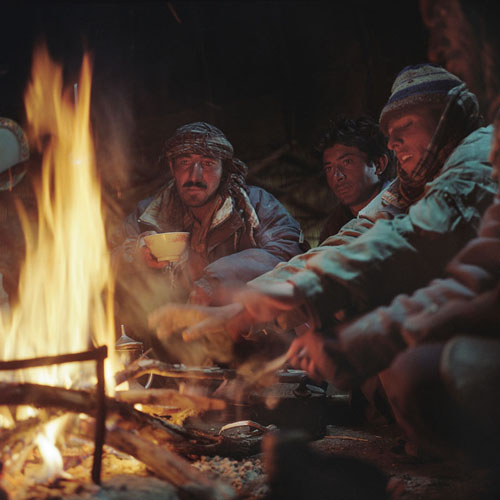Recent Articles
-
Jean-Luc Mylayne at the Museo Reina Sophia
-
An Interview with Benjamin Rasmussen
-
British Journal of Photography article on community photography projects
-
Norman Rockwell:Behind the Camera comes to Brooklyn Museum
-
Ron Jude: Emmett
Categories
- #SANDY
- 2016
- 27th International Festival of Photojournalism
- Aaron Vincent Ekraim
- Africa
- AIPAD
- Almond Garden
- American Photo
- Anna Beeke
- Aperture
- Art Desks
- Artist Events
- Artist talk
- Award
- Awards
- Barmaid
- Barney Kulok
- Behold
- Best of 2015
- Book Launch
- Book release party
- book signing
- Book signings
- Book-signing
- Bryan Schutmaat
- Call for applicants
- call for entries
- Cara Phillips
- CDS
- Chicago
- ClampArt
- Closing Exhibition
- Competition
- Conservation photography
- Contests
- Cowgirl
- Critical Mass
- Cyril Christo
- Daily Mail
- Daylight
- Daylight Books
- Daylight Digital
- Daylight Digital Feature
- Daylight Photo Awards
- Daylight Project Space
- dj spooky
- Documentary Photo
- DPA
- Dread and Dreams
- E. Brady Robinson
- Eirik Johnson
- Elaine Mayes
- Elinor Carucci
- Events
- Every Breath We Drew
- exhibit
- Exhibition
- Exhibitions
- Fall 2015 Pre-launch
- Festivals
- Film Screening
- Film screenings
- Fine Art
- Flanders Gallery
- Fotobook Festival Kassel
- Françoise Callier
- From Darkroom to Daylight
- Frontline Club
- Gabriela Maj
- Gays in the Military
- george lawson gallery
- GuatePhoto
- Guatephoto Festival
- Hariban Award
- Harvey Wang
- hochbaum
- Home Sweet Home
- Huffington Post
- Hurricane Sandy
- Interview
- J.T. Leonard
- J.W. Fisher
- Janet Mason
- Jess Dugan
- Jesse Burke
- John Arsenault
- Jon Cohen
- Jon Feinstein
- Katrin Koenning
- Kuala Lumpur Photo Awards
- Kwerfeldein
- L'Oeil de la Photographie
- LA
- Landmark
- Leica Gallery
- Lenscratch
- LensCulture
- Library Journal
- Lili Holzer-Glier
- Lori Vrba
- Lucas Blalock
- Malcolm Linton
- Marie Wilkinson
- Mariette Pathy Allen
- Michael Itkoff
- Month of Photography Los Angeles
- Mother
- Multimedia
- Nancy Davidson
- New York
- New York City
- News
- NYC
- ONWARD
- Opening
- Opportunities
- Ornithological Photographs
- Out
- Party
- Philadelphia
- Photo Book
- Photo Booth
- photo-book publishing
- PhotoAlliance
- Photobooks
- Photography
- Photography Festival
- photolucida
- Poland
- portal
- Pre-Launch
- Press
- Prize
- PSPF
- Public Program
- Raleigh
- Rayko Photo Center
- Recently
- Rencontres De Bamako
- Reviews
- Robert Shults
- Rockabye
- Rubi Lebovitch
- San Francisco Chronicle
- Seeing Things Apart
- SF Cameraworks
- silver screen
- Slate
- slideluck
- Sociological Record
- Soho House
- spring 15
- Spring 2016
- Stephen Daiter Gallery
- Sylvania
- Talk
- Tama Hochbaum
- The Guardian
- The Moth Wing Diaries
- The New Yorker
- The Photo Review
- The Solas Prize
- The Superlative Light
- The Telegraph
- TIME
- Timothy Briner
- Todd Forsgren
- Tomorrow Is A Long Time
- TransCuba
- Upcoming events
- USA Today
- VICE
- Vincent Cianni
- Visa Pour L'Image
- Vogue
- We Were Here
- Wild & Precious
- Wired
- Workshop
- Zalmai
- Zofia Rydet
News
Jean-Luc Mylayne at the Museo Reina Sophia
Posted by Daylight Books on
November 19 - April 4, 2011. Palacio de Velázquez. Parque del Buen Retiro
Currently on exhibit in the Palacio De Velazquez, a recently-renewed exhibition hall from the 1880's, are the elusive and magical images of Jean-Luc Mylayne. Mylayne's instinctual desire to photograph something as simple as a bird is unusually deep. For over thirty years he has been going to great lengths to communicate that even the most common robin or bluebird exists in a different, better world than we do.
Utilizing a process that involves hand-made lenses and prolonged periods of waiting and watching, Mylanye's images are visually baffling at first glance. The image plane of the photographs gently shares focal points between two or more subjects and leaves the peripheral spaces out of focus. The result, as the photographer has intended, is an image that closely imitates the way that we experience visual space with both eyes open. You are brought into the personal space of a the bird; A space that is not ordinarily entered. What's different from these images and an ordinary nature photograph of a bird is that you are not look through a telescope, you are actually there. Most of the questions that lingered in my mind about the pictures were related to the artist's process and his personality. What kind of a person can gain the trust of a bird?
Leaving the exhibit, you walk out into Madrid's tree-filled Parque Retiro in a new state of mind. Instead of walking down the shady paths like normal, for a while, you are privileged to experience the beauty of everyday as Mylayne might.
An Interview with Benjamin Rasmussen
Posted by Daylight Books on
Benjamin Rasmussen, a freelance photographer currently based in Denver, Colorado, has spent the past few years pursuing independent documentary projects in locations such as Afghanistan’s Wakhan Corridor and the Faroe Islands. To make said forays possible, he has taken on commercial work and assignments for clients including The New York Times and The Chronicle for Higher Education. His personal projects have not gone unnoticed, either. This year alone, he participated in the Eddie Adam’s Barnstorm Workshop XXII, and his work was selected for the American Photography 26 Annual and photolucida’s 2010 Critical Mass.
---
Interview by Trent Davis Bailey
Photographs by Benjamin Rasmussen
Daylight: As a freelance photographer and photojournalist simultaneously working on both editorial and commercial assignments, how do you manage to find a balance between the two? And what sort of discretion, if any, do you take when deciding on your commercial work?
Benjamin Rasmussen: Finding the balance between commercial and editorial work has forced me to grow as a photographer. My photojournalism has pushed my commercial work to become more real and moment-driven. My commercial photography has made me focus on the aesthetics of my photojournalism and how a viewer responds to the images.
The goal for all of my photographs is to create a personal and aesthetic connection with the people looking at the image that will move them towards action. The thought process of, “What will this image make the viewer think and feel about this product or brand?” has caused me to think more about what my editorial images will make someone think or feel about the story.
Business-wise, the two work well together. My personal projects get me commercial work, which funds me to do more personal projects.
When choosing commercial work, I like to work with clients whose businesses practices I agree with, and with art directors who share my vision. That is not so different from how I choose which editorial clients to target.
From the project, "The Faroese Whale Kill."
Commercial work for the seventieth anniversary campaign for insurance company Tryggingarfelagið Føroyar.
D: I imagine, in an ideal world, you would be working exclusively as a full-time photojournalist. Is this assumption correct?
BR: I originally thought that I wanted to work exclusively as a photojournalist, but what I have found in my short time in this industry is that what I am passionate about rarely lines up with the needs of photo editors. I love my photojournalism clients and enjoy the challenge presented by my assignments, but I don’t think that working full-time as a photojournalist would provide me enough flexibility to pursue the stories that I am interested in. One day of commercial shooting pays five or ten times what a day of editorial shooting does. That gives me a lot more room for projects that I care about.
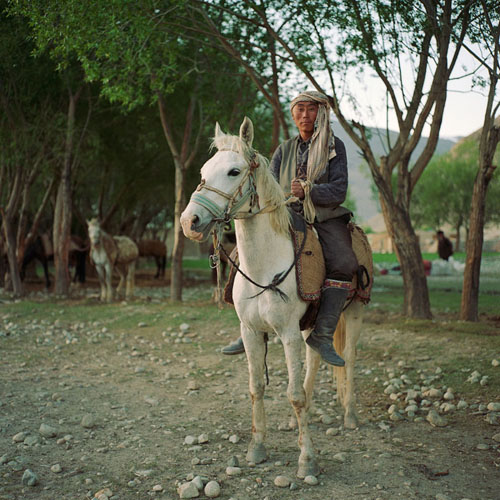
From the project, "Afghanistan's Wakhan Corridor."
D: Given the distinct difference in editorial versus commercial payout, what, in your opinion, is the current state of photojournalism? And, with many newspaper and magazine offices shuttering their doors, where do you see the industry heading?
BR: I think that photojournalism is in a better place than it has been at any other time. Yes, the traditional industry of photojournalism is dying, but I say good riddance to it. I really do hope that the days of a bunch of white guys sitting around in New York, Paris and London telling one half of the world what to think about the other half are over. Today, there is more powerful work being done by a more diverse group of people and it is being seen far more widely.
The public interest in photojournalism seems much higher than ever before. This creates both a larger audience that is interested in seeing powerful stories, as well as more funding opportunities for photographers. While there is less money in newspapers and magazines, the photojournalistic style is being embraced by the commercial, fine art and wedding worlds. Photographers who diversify can still do stories they are passionate about, still get them out to a large audience and still make a living, but the process is not streamlined like it once was.
From the project, "Afghanistan's Wakhan Corridor."
D: Speaking of diversity in photojournalism, your own background seems to place you among this growing group of culturally diverse photographers. You’re currently based in Denver, Colorado; grew up in the southern Philippines; went to college in Arkansas; and lived for a year in the Faroe Islands. How has this influenced your work?
BR: Growing up in the Philippines and being half American and half Faroese, I have always existed in three very distinct cultures without really being a part of any of them. Because of that, the projects that attract me are ones that allow me to explore those identities.
An example of this is the work I have been doing in the Faroe Islands, a small protectorate of Denmark in the middle of the North Atlantic with 48,000 inhabitants. I have been pursuing a long-term project in the Faroes exploring the relationship that people in such a remote place have with the ocean, as they have always relied on provision from the sea. I am interested in the dichotomy that exists with the water bringing both life and death, and how it simultaneously connects people to each other within the islands, but also isolates them from the outside world.
One part of this project is looking at the pilot whale kills that still take place in the Faroe Islands. Taken by itself, the practice is brutal. As a photographer my understanding could really just stop there. But since this is my country, I want to examine the cultural context behind the practice and explore it as a metaphor for the conflict between man and sea. This approach is a lot more work and takes much longer, but I think that the final product will be unique because of my cultural insight.
Both images from the project, "The Faroese Whale Kill."
D: One of your most recent photo projects took you to Afghanistan’s Wakhan Corridor, how did this come about?
BR: I have been interested in doing something in Afghanistan since moving back to the United States in 2009. It is our generation’s conflict, and I was looking for something that I could add to the conversation about the war. My sister-in-law was working in northeastern Afghanistan at the time and told me about the Wakhan Corridor. As I researched the region, I saw that it illustrated exactly what I felt was missing from our national dialogue about Afghanistan. It was a part of Afghanistan without the Taliban. It was a way to portray Afghans without using the loaded vocabulary of this war.
From the project, "Afghanistan's Wakhan Corridor."
D: Daylight Magazine’s Issue 8 features selections from 14 photographers’ portfolios on Afghanistan. The essays range from Aaron Huey’s“Afghanistan Drug War,” to Tim Hetherington’s “Sleeping Soldiers,” to Moises Saman’s “Broken Promise.” Also included is Beth Wald’s story, “Wild Afghanistan—The Wakhan Corridor,” which she photographed for National Geographic in 2004. Both of your projects seem to depict a common hospitality and pride among the region’s inhabitants, which is unique considering the country's association with war-torn and drug-related imagery. What was your initial vision with your project and do you plan on going back to further explore the region?
BR: Beth Wald was a big help as I was researching this region. We were both living in Boulder, CO, and she took the time to meet with me and tell me what to expect and how to plan.
My goal for the project was really simple: to show a different kind of Afghan. I wanted to make pictures that would stand in contrast to the images of the Taliban, war, and poppy fields people are used to seeing. It is not that those images are not real or important, but I think that the saturation of negative Afghanistan images in the media leads to a cultural value judgment of Afghans in general. If we never show them outside of the roles of aggressors or victims, they never become real people in our minds.
I hope to go back to the region and continue this project some time in the next year. Because of logistical difficulties, I was only able to spend a small amount of time in the Wakhan and only scratched the surface of what I want to do.
British Journal of Photography article on community photography projects
Posted by Daylight Books on
I try to focus my weekly contributions to Daylight Daily on community photography programs, or individual artists who are engaged in community-based projects. Recently, I read an article online from the British Journal of Photography that was written this past June (yes, not very timely, but maybe you missed it too) about the closing of Photoworks Westminster, a community arts group in London that was formed in 1976 (originally formed as the North Paddington Community Darkroom, or NPCD). Although the article focuses on the activities of this specific organization, and the circumstances surrounding its demise, the author, photojournalist Philip Wolmuth (and founder of NPCD), also makes many great points about community arts projects in general. Wolmuth describes community-based arts projects as a "more radical critique of the role of the photographer and the use of photographic imagery" than the somewhat less politically engaged field of "socially concerned" photography, embodied by the work of Jacob Riis and Lewis Hine. He writes, "The early community arts groups sought to democratize the arts - to engage those who did not otherwise relate to the 'mainstream' arts world - by making the arts relevant to their daily lives and experiences. The aim was to empower local residents… by encouraging a critical approach to conventional forms of representation." The article - found here - is definitely worth a read, and makes me wonder, what other community-based collaborations exist today? Do community-based projects have to necessarily be political? How are artists reinterpreting the intersection of documentary practice and public engagement?
Norman Rockwell:Behind the Camera comes to Brooklyn Museum
Posted by Daylight Books on
The wonderful show "Norman Rockwell: Behind the Camera" has made its way to New York City, via Brooklyn. Of course, it's not a secret that painters and illustrators often use source photographs for their work, but how may of them make those elaborate photographs in a studio set with full lighting, casting and a camera crew? (This is all before the likes of Crewdson, Sherman, Simmons and Wall.) The pictures can stand alone, though they are presented in this exhibition with the painted pieces they ended up becoming. The images remind one of staged Americana in early television, advertising and Speed Graphic new photos of the 50's. A favorite moment is when it is revealed that a person walking was really just one standing still, but with a book propped under part of the foot. Another is when a lively ponytail is held up, not by it's own springy-ness, but by a cute assistant's hand. Everything becomes clear; everything is revealed. There are unseen images, many just discovered during the scanning and archiving of the pictures from his studio, which include about 20,000 negatives. For a previous Daylight post about his work:http://www.daylightmagazine.org/blog/2010/8/5/834 “Norman Rockwell: Behind the Camera” - through April 10, the Brooklyn Museum, 200 Eastern Parkway, at Prospect Park, www.brooklynmuseum.org
Ron Jude: Emmett
Posted by Daylight Books on
About this time last year, I was visiting my parents in Upstate, NY. I found boxes of 4"x6" prints I had made when I was a teenager. I was surprised at what the images revealed about myself and my attempts at being a good photographer nearly ten years later. I immediately began making piles of photographs. There were flowers, night-scapes, portraits of my siblings, insects, cars, sports, etc. After looking at those pictures for a couple a weeks, I realized that those photographs, the ones that most of us made as kids, contain an strangely clear narrative. The photographs were no longer about what the actual subject was, but linked with the other images, they seemed to explain why I was photographing in the first place.
Ron Jude's newest book, Emmett, published by The Ice Plant, contains a relationship; a collaborate with a single person. Jude made these photographs in the early 1980's, a time when , Jude says, he "had a feverish passion for photography" but "knew very little about the medium in terms of its history and its role in contemporary art" Even if you had no interest in photography as a teen or young adult, you still understand these photographs and their multilayered story thirty years after they were first created. Jude approached this project in much the same way as he did with his Alpine Star book, where he appropriated, often strange but banal, images from the local newspaper. Although he the photographs in "Emmett" were actually created by Jude, time has created a mental distance that allowed Jude to edit these images into an entity that exists outside the boxes of photos the book was created from.

Ron's friend and a TV with various shows appearing on its screen reappear throughout the book. We are continually shaped by our environment. For Ron in the 1980s, he had the rural landscape of Idaho, Motorhead, Nausea, the Rockford Files and muscle cars. "Television was my connection to the outside world and shaped my sensibility, not just as an artist, but in a very general sense," said Ron. There is a raw innocence in the way these things were translated through Ron's camera, but there is also the subtle sophistication of an established mind re-contextualizing a "non body of work" into a reflective narrative that takes us somewhere we have been and understand within our own past experiences. But, how do we make sense of the past when seen through photographs or on television? Ron says,"it's a project about the nature of the past (does it exist?), our desire to give structure and meaning to our memories, and our inability to ever fully know or understand ourselves through self-reflection. These pictures couldn't have been about those things 26 years ago." Everything that happens in the present comes from a culmination of past events. These photographs are now being viewed through the filter that now looks back and reflects on past desires, boredom, and isolation from any artistic criticism.
